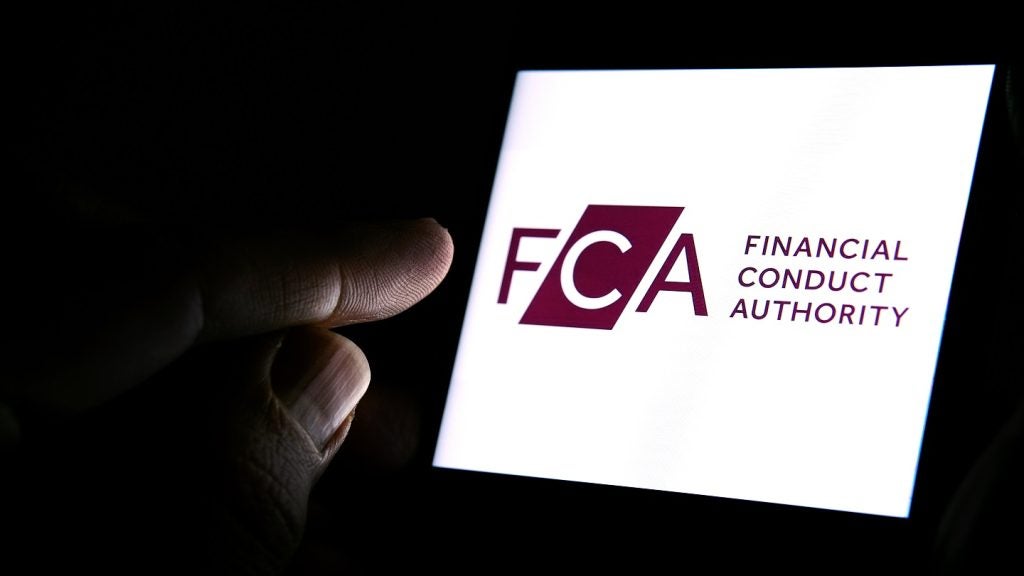
Mergers and acquisitions are an often maligned part of a company’s life cycle. For many the image of being taken over is one where the company ceases to be the company they knew or even to exist at all. Many worry that a takeover or merger may mean the loss of valued, well-trained and loyal staff.
Some of this perception inevitably comes from the bad publicity that many of the biggest deals get in the press, the recent Astra Zeneca/Pfizer deal being a good example.
M&A activity need not be like this. For many more companies, being taken over leaves the management in place yet provides a much needed capital injection to a level that a loan or bond issue can never achieve.
The M&A markets have suffered as much during the economic downturn as any other. Deals across the whole economy have been few and far between and especially so in the asset finance industry, where activity was largely restricted to the sale of underperforming or ‘distressed’ portfolios to credit funds.
In the past 18 months, however, general M&A activity has picked up significantly. Research from Cass Business School and Towers Watson showed that 106 deals over $100m (74.4m) were completed in 2013 alone, with the vast majority of those deals involving UK companies.
The reasons are complex, but are being helped by the low interest rate environment believes Christian Roelofs, a director in the leasing asset and consumer finance team at Grant Thornton. This environment has given companies the confidence to take on the additional debt that has come to be a part of M&A deals.
Another reason, believes John Leech, head of automotive at KPMG UK, is more a matter of timing. "I think the judgement call people are making is about when is the right time to sell, and people are coming to the view that we are now getting close to the top of the market, and so from a vendor’s, or owner’s perspective, it’s becoming a very good time to sell."
How well do you really know your competitors?
Access the most comprehensive Company Profiles on the market, powered by GlobalData. Save hours of research. Gain competitive edge.

Thank you!
Your download email will arrive shortly
Not ready to buy yet? Download a free sample
We are confident about the unique quality of our Company Profiles. However, we want you to make the most beneficial decision for your business, so we offer a free sample that you can download by submitting the below form
By GlobalDataThe combination of these two factors has also coincided with a good time for the asset finance industry, which has led the industry to seek to grow in both size and how much it can lend.
As discussed in last month’s edition of Motor Finance, access to capital, when it has been available, has not been sufficient to allow an ambitious company to compete at a higher level.
Jens Diehlmann, partner at EY and global automotive leader said: "There’s still a consideration that the book sizes are not really good enough to grow the business as they are."
Roelofs agrees."When you have growth, it’s your classic play. People go in, find a good operating platform and they take it. If it doesn’t happen, people will have missed a trick.
There are significant advantages and financial benefits that you can then get from taking on two or three other players or portfolios over the next 12 months," he continues.
This leads to significant opportunities to create synergies both in terms of operations and also access to funding, which due to the considerable increase in portfolio size will be both cheaper and open to different funding tools, believes Roelofs.
And for companies looking to expand across borders there are other advantages. "You have an existing sales organisation and back office operations. So time to market, and market access, being up and running operationally are quicker," says Diehlmann.
Diehlmann adds that using M&A to enter new markets has advantages in terms of avoiding jumping through regulatory hoops. "You don’t have to apply for licences to get your first portfolio," he explains.
This means that right now the advantages for companies getting involved in M&A are numerous. "One is growing your portfolio; another is leveraging and taking market advantage in certain areas, for example in southern Europe, where currently the prices are down. It makes for an easy market entry," said Diehlmann.
Now may be a good time for companies to get involved in M&A, but for some, putting a company up for sale still leaves the perceived risk of losing control of what may have been a lifetime’s work.
This fear though is often completely unjustified thinks Roelofs. "What we are seeing right now is the classic situation," he explains. "They are buying into the management team. If it’s a private equity investment for example they are backing the management team. They don’t want the management team to exit because they are buying that business to continue and grow."
To this end the structures being put forwards are not simple buyouts in the classic understanding. The use of innovative structures to create means of keeping and incentivising the original management team is extensive.
"In effect there are any number of legal ways to structure a deal, but the bottom line here is that you give some economic benefit today and some in the future," says Roelofs.
Some of the ways these deals are done to keep the management are to create a partnership rather than a buyout. This is the merger part in the mergers and acquisition name after all.
There’s also the option of pursuing the earn-out route. The earn-out, according to Roelofs, is where: "They are willing to pay you X based on their baseline and the trajectory going forwards as predicted by the seller. They then share it 50/50 or in another structure as an upside."
This deal is not just structured to attract those who would otherwise be unwilling to sell, but also to keep those owners whose intention is to sell and walk away from a business.
This leads to a great deal of time being spent by the consultants used by vendors being used to explain the various deals that could be open to the vendor looking to sell and yet retain an element of control in the company.
This structure in particular is effective in keeping the management in place, with their ideas and expertise adding to the increased capital that a larger partner brings with it.
An example of this sort of trade came with General Motors’ (GM) acquisition of AmeriCredit in 2010 to create a captive finance business called GM Financial. When GM took over the subprime lender, it retained a large number of the management of the successful company.
The GM Financial model also illustrates another aspect of the current M&A deals, in that it was not a failing company that was looking to be taken over, the "distressed play" as Roelofs describes it.
The attractiveness of asset finance companies and the profitable receivables streams they bring with them has made the market one where sellers are now likely to find a potential partner.
The move though has not come without its problems. For one, the expectations of the seller can potentially be far from those of the potential suitor. Leech says: "I think the potential purchasers of those businesses are increasingly wanting to build in a degree of risk about the residuals which therefore means there is quite a price gap."
Leech said that for a purchaser there needs to be a certain amount of ‘hedge room’, in which the price paid has a percentage of risk hedging built-in covering a downturn in cash flows, and this leads to a lower estimate of the price of a company in comparison to what the seller would expect based on the seller’s figures.
Over-keen sellers
This is exacerbated by the over-keen attitude of some sellers, thinks Roelofs. "There’s a bit of a lack of appreciation from within the market of what you need to do to get your business ready for sale and I think that that is costing people a lot of time through the process. "People haven’t really started thinking about sale and preparing the business and getting the financial records to the place that they should be," he continues.
Therefore the vendor is failing to prepare fully while now, more than ever, purchasers are looking for much more detail about the company, believes Roelofs. "They want to do historical analysis, as these aren’t just a push-button exercise and they are not just getting your accounts," he said.
As result both Leech and Roelofs believe that deals in the UK are now taking longer to put together than before the financial crisis started. "What we’re seeing is these transactions taking quite a while. Where things might have been done in three months previously, they are taking six, nine or 12 months," says Roelofs of his experience over the past year to 18 months. Leech adds: "That’s because of the negotiation. They are negotiating from a position which is further apart."
Diehlmann of EY hasn’t had this experience on the continent. "There’s a very short financial due diligence, and then you go directly into the negotiation with the management team or indeed the owner. "There’s a lot more direct contact and direct negotiation which leads to a shorter M&A period," he says.
Diehlmann explains the reason, in his opinion, is the size of deals being done on a global basis at present are generally smaller than those put together three to four years ago. Roelof’s concurs with this assessment of the deal sizes and the companies involved. "It’s more the small to medium-sized company within the UK at the moment. I would suggest something around that we are seeing, with assets of £10-15m."
Potentially, however, the tide will turn back to larger deals as the demand for investment in asset finance companies matures.
Leech believes that tide is already turning into a wave of new deals. "Over the course of the next year to two there will be some quite substantial deals," he says.
The wave will be tinged with the type of caution that’s been typical of the past few years believes Leech, but in his opinion this is no bad thing after the haste of the markets pre-credit crisis. At present he says: "There are plenty of deals that you can find at four times earnings before interest, taxes, depreciation, and amortisation, but the long-term trend is reducing," before emphasising: "I think at the moment the deals that are being done are making the industry more resilient."
Roelofs is in agreement about both the volume of business upcoming and the potential that has for the asset finance industry. "I wouldn’t say I see the M&A growth and the transactions that we’ve seen in the past 6-12 months stopping in the short term. I see that continuing for the next 12-18 months," he says and this will only increase the ability of the industry to lend. "Look at all the M&A that’s happening and all the growth projections of the businesses in the UK," Roelofs explains. "Everyone starts getting lots of funding and everyone starts having massive growth profiles."
Where the majority of the deals will happen though is still open to question. The bigger banks, under pressure from shareholders, particularly in the UK, may well look to divest themselves of their asset finance businesses, long seen as non-core to their business.
Roelofs is not so sure."I think longish term they might look to outsource some of the finance services because maybe from a cost perspective they should sit outside a banking structure," he says."But I think those businesses are profitable and they are providing services to a core customer base. Today it might not make sense to divest."
He bases this belief on the example of ALD’s takeover of the Lombard Vehicle Management business, which then became the Lombard Vehicle Solutions business in the summer of 2012.
This joint venture occurred, Roelofs believes, because Lombard still needed to cover the commercial vehicle clients, but found the company without a viable vehicle management business after the financial crisis. Rather than divest itself entirely of the business it made more sense for the UK giant to combine with a third party to offer the necessary service.
Where the long-term future lies in asset finance and M&A, believes Roelofs, is not solely in pursuing growth through purchase, but to increase efficiencies between companies and reduce cost.
One consequence that Roelofs subscribes to, is that the market will slow, but not stop, as companies seek to assimilate what they already have, and reduce cost to help increase margins in the face of competition.
Another is that with a shrinking competition pool in a home market, companies will seek to diversify in other ways. Diehlmann believes this will push the finance markets towards the emerging markets, despite the earlier failure of the exploration of expansion into Eastern Europe for some companies.
For a long time the asset finance industry has not fully explored expansion overseas and the increasing competition in home markets may force the hand of the independents looking to grow to any great extent, which reinforces Diehlmann’s reasons for entertaining the idea of a takeover.
Whatever the future for M&A and the advantages it may have in terms of cost, cross-border expansion, and the potential to deliver substantial growth for a company, the time for M&A is now.
The profitability of the asset finance markets has made them a popular target for both private equity companies and for larger financial institutions looking to expand their market coverage, and with good deals with favourable terms and low interest rates making the cost of financing M&A cheaper than ever.
It would be a conservative company that doesn’t at least explore the potential to grow via M&A at the moment. n







